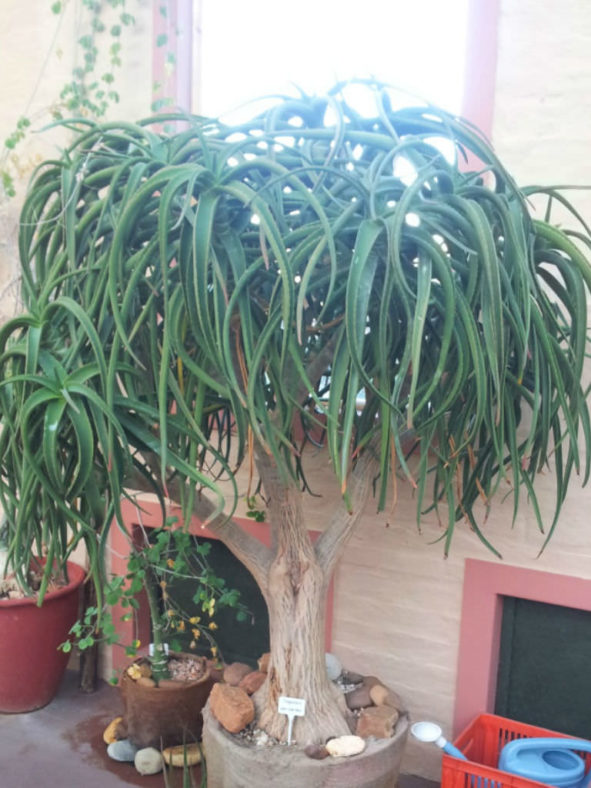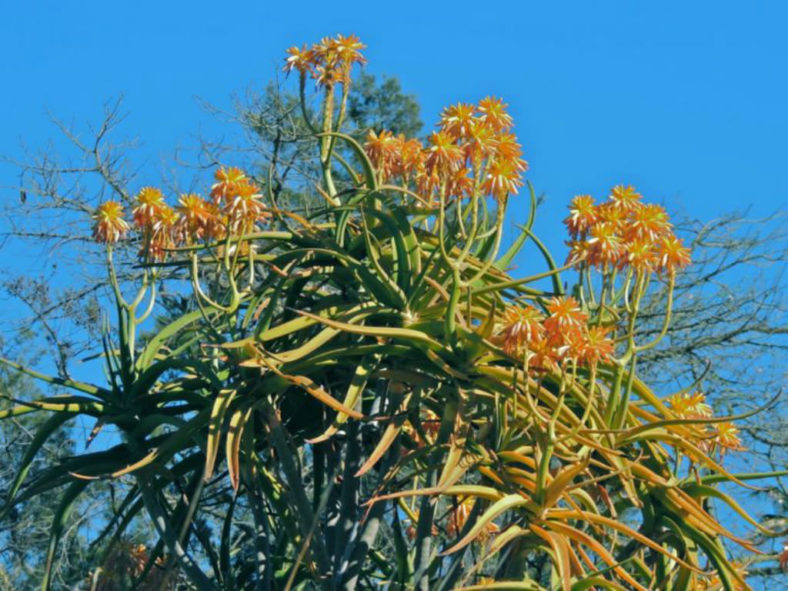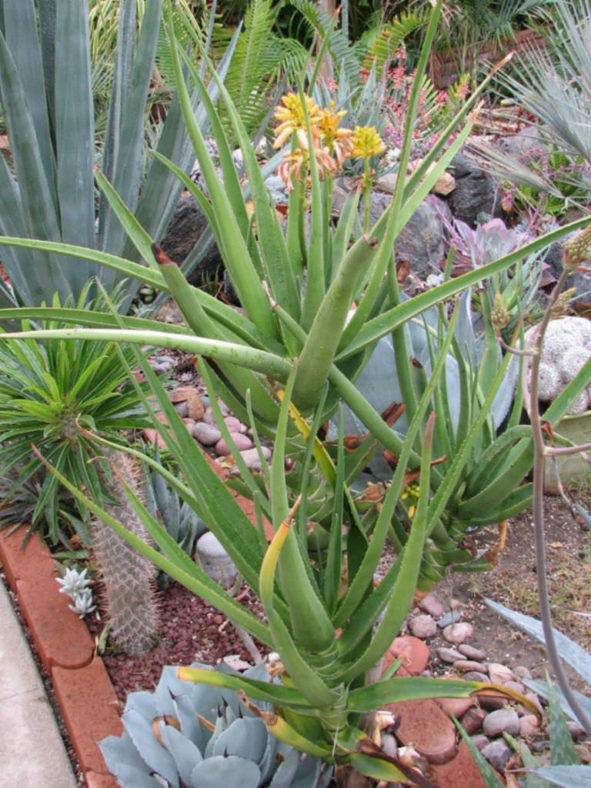Scientific Name
Aloidendron tongaense (van Jaarsv.) Klopper & Gideon F.Sm.
Common Name(s)
Tonga Tree Aloe, Mozambique Tree Aloe, Medusa
Synonym(s)
Aloe tongaensis, Aloidendron tongaensis
Scientific Classification
Family: Asphodelaceae
Subfamily: Asphodeloideae
Genus: Aloe
Origin
The native range of Aloidendron tongaense is in the sand forest and coastal dune forest at Kosi Bay in northern KwaZulu-Natal province of South Africa and along the southern Mozambique coast as far north as Inhambane, with a known disjunct collection further north in the Cheringoma District of east-central Mozambique.
Description
Aloidendron tongaense, formerly known as Aloe tongaensis, is a succulent tree with an erect, stout trunk, dichotomously branched stems, and dull green leaves arranged in rosettes at the branch tips, forming a rounded crown. It can grow up to 26 feet (8 m) tall, while the trunk can reach a diameter of 2.6 feet (80 cm) at the base. The branches are without persistent dried leaves and with grey bark. The leaves are spreading to recurved, sword-shaped with marginal teeth, and deeply channeled, measuring up to 24 inches (60 cm) long and 1.8 inches (4.5 cm) wide.
The inflorescence is branched and can grow up to 14 inches (35 cm) tall and 4 inches (20 cm) in diameter. The flowers are yellowish-orange, cylindrical, and curved and appear mainly in fall in a compact head on erect, up to 6-branched inflorescence that can grow up to 14 inches (35 cm) tall. They can measure up to 2 inches (5 cm) long and about 0.3 inches (0.8 cm) in diameter.

Hardiness
USDA hardiness zones 9a to 11b: from 20 °F (−6.7 °C) to 50 °F (+10 °C).
How to Grow and Care
Aloes are very forgiving plants. As with all succulents, Aloe must never be allowed to sit in stagnant water, and the plant should be carefully monitored to watch for signs of overwatering.
These succulents are not particularly fast-growing and will only rarely need repotting. In the spring, repot Aloes tipping over their pots or have ceased growing. Use a fast-draining potting mix with one-third of sand or pebbles. When repotting a larger plant, dividing the root ball carefully is possible. Some varieties of Aloe will send off offsets that can be potted independently.
Aloe plants need intense sunlight. Once acclimated, they can withstand full summer sun. In the winter, provide bright light. It prefers warmer temperatures of 70 to 80 °F (21 to 27 °C) but will survive down to 40 °F (4.5 °C). Feed with a succulent fertilizer in the summer only. Suspend feeding in the winter as the plant goes dormant.
Learn more at How to Grow and Care for Aloe.
Cultivars
Links
- Back to genus Aloidendron
- Succupedia: Browse succulents by Scientific Name, Common Name, Genus, Family, USDA Hardiness Zone, Origin, or cacti by Genus
Photo Gallery
Click on a photo to see a larger version.


